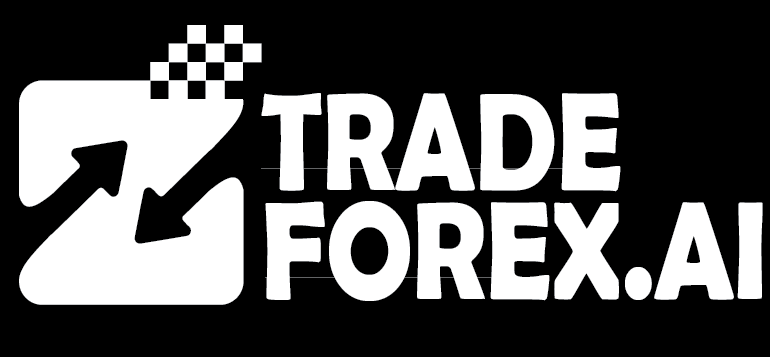Dynamic vs. static support and resistance has been one of the longest-running debates in trading. These two techniques are the foundation of market analysis and influence how traders interpret price behaviour. Support and resistance trading strategies are applied in every market, from forex to stocks, commodities, and even crypto. Knowing how to choose between dynamic vs. static support and resistance is more than an academic decision. It directly impacts profitability, consistency, and the ability to manage risk in a changing environment. Traders who want to compete in 2025 need to master both methods because market speed and volatility demand flexibility along with structure.
Support and resistance are not abstract theories but active forces guiding the tug-of-war between buyers and sellers. At support, buyers see value and push the market upward. At resistance, sellers recognise opportunity and push the market downward. Understanding these invisible boundaries makes it possible to identify reversal points and breakout triggers. The real challenge comes when deciding whether static support and resistance in forex or adaptive support and resistance techniques provide the clearer signal. This article explores both approaches in detail, compares their advantages and disadvantages, and shows how traders can integrate them for stronger results.
Why Support and Resistance Trading Strategies Matter
Support and resistance trading strategies form the backbone of technical trading. They provide traders with structure in an otherwise chaotic market. Without them, price action appears random, but when these levels are applied, order emerges from noise. Static support and resistance in forex relies on levels that remain unchanged, often drawn from historical highs, lows, or major psychological barriers like round numbers. Adaptive support and resistance techniques, in contrast, adjust with price flow, helping traders keep pace with evolving market conditions.
For instance, a trader watching the EUR/USD pair might identify 1.1000 as a static support. This level has held firm over multiple attempts, giving traders confidence to buy when the price revisits. At the same time, the 50-day moving average could serve as a dynamic guide. If price reacts to both the static line and the moving average, the zone becomes even stronger. This is where support and resistance trading strategies gain true power—by using both fixed levels and dynamic support and resistance levels to confirm setups.
The importance of these strategies cannot be overstated. They reduce guesswork, improve risk-to-reward planning, and give traders the confidence to hold positions longer. Many losing traders fail not because their entries are poor but because they do not understand the strength of support and resistance. Mastering these concepts transforms scattered decisions into structured trading plans, proving that dynamic vs. static support and resistance is at the heart of consistent trading success.
Static Support and Resistance in Forex Explained
Static support and resistance in forex refers to fixed levels that do not change with every new price movement. These are often drawn at significant swing highs, swing lows, or consolidation zones that act as turning points. Once established, they remain relevant until broken decisively. Traders favour them because they provide clarity and stability. A line drawn at a past high, like USD/JPY at 150, often remains valid for months, even years. Institutions and retail traders alike observe these levels, making reactions stronger.
However, static support and resistance in forex also come with challenges. In trending markets, fixed levels may lose importance as price develops new structures. When a breakout occurs, traders must adjust quickly because what was once resistance often becomes support. This shift requires discipline and constant re-evaluation. Adaptive support and resistance techniques offer a solution by updating with every price swing. Still, static levels remain essential, especially for swing traders and investors who operate on higher timeframes. They act like landmarks on a map, guiding traders through unfamiliar territory.
A practical example can be seen in gold trading. A level like $2000 has acted as static resistance many times. Each test either causes a reversal or, when broken, signals a strong rally. Traders who respect these levels find themselves aligned with the crowd. This is why static support and resistance in forex continue to be relevant despite fast-paced markets. When used correctly, these levels provide a clear framework that complements adaptive approaches.
The Role of Dynamic Support and Resistance Levels
Dynamic support and resistance levels are fluid and constantly adjust to price changes. They are usually created by tools like moving averages, trendlines, or envelopes. Unlike fixed lines, they move with each new candle, providing traders with adaptive support and resistance techniques that evolve with current momentum. A rising 20-day moving average, for example, may act as a support in an uptrend, while a falling one may serve as resistance in a downtrend. Traders who rely on dynamic support and resistance levels often find them more responsive during volatile periods.
Consider GBP/USD in a strong upward trend. Price repeatedly pulls back to the rising 50-day moving average and bounces upward. This moving average becomes a reliable dynamic guide for entries. Traders who wait for static support might miss the opportunity since the market keeps printing new highs. Here, adaptive support and resistance techniques keep traders aligned with market rhythm. This makes dynamic vs. static support and resistance a matter of context rather than superiority.
Yet dynamic levels also carry risk. They can provide false signals in choppy conditions where price cuts through moving averages repeatedly. They work best when the market has a clear directional bias. For intraday traders who focus on short-term momentum, dynamic levels often provide more precise entries than static ones. However, long-term traders may prefer the stability of fixed levels. Combining both styles ensures traders can navigate trending and ranging conditions effectively.
Pros and Cons of Static Support and Resistance in Forex
The main strength of static support and resistance in forex is its simplicity and visibility. Everyone sees the same horizontal lines, which creates collective reactions. This collective psychology adds weight to these levels, especially on higher timeframes. Traders can use them to define risk, set stop losses, and establish profit targets with precision. For example, a static support level on the weekly chart might act as a barrier for months, providing confidence for swing traders.
However, the drawback lies in rigidity. Markets evolve, and fixed levels sometimes lose meaning as new structures develop. Sudden economic news or policy changes can push prices through long-standing levels. When this happens, static support and resistance in forex may mislead traders into expecting a bounce that never comes. Adaptive support and resistance techniques adjust faster, making them more reliable during such events. This limitation highlights why the debate on dynamic vs. static support and resistance continues.
Traders must also avoid overloading charts with too many static levels. Doing so creates confusion and weakens decision-making. A disciplined approach, where only the most significant levels are marked, ensures clarity. When used with patience, static levels can be powerful. But when relied upon blindly, they expose traders to sudden losses. Recognising both sides of static levels allows traders to build more balanced support and resistance trading strategies.
Pros and Cons of Dynamic Support and Resistance Levels
Dynamic support and resistance levels shine in trending markets where price respects moving averages or trendlines. They offer flexibility and real-time updates, making them ideal for adaptive support and resistance techniques. By following price action closely, they help traders enter trades earlier and ride momentum longer. They also highlight changes in market sentiment more quickly than static levels. For instance, when price breaks below a rising moving average, it often signals a shift in trend.
Despite their advantages, dynamic levels require constant monitoring. They change with every new candle, making them less stable than fixed levels. In ranging markets, moving averages may provide multiple false signals. Traders relying only on dynamic support and resistance levels may end up chasing price without clarity. Another issue is subjectivity in drawing trendlines. Different traders may connect different points, leading to inconsistent results. In contrast, static support and resistance in forex reduces such subjectivity.
The solution is balance. Traders should not dismiss dynamic levels because they produce false signals. Instead, they should understand the market environment where they work best. For example, a combination of trendlines with moving averages provides more reliable signals. This adaptability highlights why dynamic vs. static support and resistance must be seen as complementary rather than competing techniques. Each adds strength where the other shows weakness.
Combining Both Approaches for Stronger Results
Successful traders rarely choose one side in the dynamic vs. static support and resistance debate. Instead, they combine both methods to create confluence. A static level from a historical high becomes even more powerful when it aligns with a moving average. This overlap confirms both trader psychology and market momentum. Such confluence zones often trigger strong reactions and provide excellent trading opportunities.
Practical support and resistance trading strategies often follow these steps:
- Identify static support and resistance in forex using historical highs and lows.
- Apply adaptive support and resistance techniques like moving averages to confirm levels.
- Watch for alignment between static and dynamic levels for stronger setups.
- Adjust entries and exits based on both confirmations.
For example, if EUR/USD shows resistance at 1.2000 and the 50-day moving average is also nearby, the zone becomes highly significant. Traders may short with greater confidence. This blend reduces false signals and increases accuracy. Combining both approaches also ensures adaptability across market conditions. Whether the market trends or ranges, traders have tools to respond effectively.
Practical Examples in Real Markets
Real market examples show how dynamic vs. static support and resistance work in practice. During a bullish phase in the S&P 500, static resistance might form at a previous peak. At the same time, a rising 200-day moving average supports the rally. When both levels overlap, traders view the area as highly reliable. This dual confirmation reflects the strength of combining approaches.
In forex, gold often reacts to round static levels like $1900 or $2000. When a dynamic level such as a trendline supports the same price zone, traders get strong confirmation. Similarly, in AUD/USD, static resistance might hold at 0.6800, but a falling 100-day moving average confirms weakness. These overlaps show adaptive support and resistance techniques working alongside fixed levels. Such examples emphasise why traders must master both techniques to avoid missed opportunities.
Another scenario is crypto trading. Bitcoin often respects psychological static levels like $30,000 or $40,000. At the same time, traders track moving averages to gauge momentum. When static support aligns with dynamic support, confidence in the trade grows. These real-world cases demonstrate that the key is not choosing one method over another but learning to combine them wisely.
Common Mistakes Traders Make
Many traders misuse support and resistance by overcomplicating charts. One common mistake is plotting too many static levels. This creates confusion instead of clarity. Another error is relying only on one moving average to define dynamic support and resistance levels. Markets are too complex for a single guide. Traders who ignore higher timeframes also make mistakes. A static level valid on the daily chart may not matter on a five-minute chart, yet many traders fail to check multiple perspectives.
Confirmation bias is another pitfall. Traders may adjust trendlines to fit their expectations instead of market reality. This reduces accuracy and leads to poor trades. Adaptive support and resistance techniques can help, but they also require discipline. Similarly, ignoring how static support and resistance in forex behave after a breakout leads to repeated losses. Traders must learn that once broken, support often becomes resistance and vice versa. Avoiding these mistakes improves the effectiveness of support and resistance trading strategies.
Conclusion: Which is Better?
Dynamic vs. static support and resistance is not about choosing one as superior. Static support and resistance in forex provides long-term structure and stability. Adaptive support and resistance techniques offer real-time flexibility and responsiveness. The most effective traders use both together. Support and resistance trading strategies become most powerful when dynamic support and resistance levels confirm static zones. This confluence reduces risk and strengthens decision-making.
In today’s markets, traders face rapid changes and constant uncertainty. Relying only on fixed levels or only on adaptive techniques creates blind spots. A balanced approach ensures readiness for all conditions. The question is not which is better but how to combine them effectively. Mastering both methods equips traders with a complete toolkit for consistent performance in forex, stocks, or commodities. The path to long-term trading success lies in learning how to blend the precision of static levels with the adaptability of dynamic ones.
Read here to learn more about “Support and Resistance Strategies for Consistent Trading Profits“.

I’m Chaitali Sethi — a seasoned financial writer and strategist specializing in Forex trading, market behavior, and trader psychology. With a deep understanding of global markets and economic trends, I simplify complex financial concepts into clear, actionable insights that empower traders at every level. Whether it’s dissecting winning strategies, breaking down market sentiment, or helping traders build the right mindset, my content bridges the gap between information and implementation.




